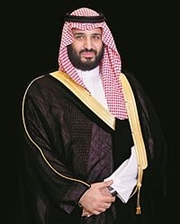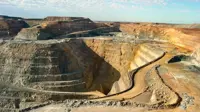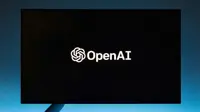Saudi plans to end "addiction" to oil by 2030
26 Apr 2016
 Saudi Arabia will end its ''addiction'' to oil and transform itself into a global investment power by the end of the next decade, under an ambitious plan unveiled by Deputy crown prince Mohammed bin Salman on Monday.
Saudi Arabia will end its ''addiction'' to oil and transform itself into a global investment power by the end of the next decade, under an ambitious plan unveiled by Deputy crown prince Mohammed bin Salman on Monday.
Saudi Arabia, currently the world's largest oil exporter, is planning to raise the capital of its Public Investment Fund (PIF), to seven trillion riyals (about $2 trillion) from 600 billion riyals ($160 billion) at present.
Under the `Vision 2030' programme, the kingdom will also offload up to five per cent stake in state-run oil giant Aramco to bolster its investment fund.
Incidentally, India is looking to acquire a stake in Saudi Aramco, petroleum minister Piyush Goyal said.
The Saudi prince also proposed to alter the ultra-conservative kingdom's social structure by assigning greater economic roles for women and improving the status of resident expatriates.
"We will not allow our country ever to be at the mercy of commodity price volatility or external markets," Prince Mohammed said at his first news conference with international journalists, who were invited to a Riyadh palace for the event.
"We have developed a case of oil addiction in Saudi Arabia," he had earlier told al-Arabiya television news channel.
Under the `Vision 2030' programme, Saudi Arabia plans to raise its non-oil revenue to 600 billion riyals ($160 billion) by 2020 and further to 1 trillion riyals ($267 billion) by 2030, from 163.5 billion riyals ($43.6 billion) last year.
Despite the statement of intent, the plan looked vague as it gave little details on how the transformation would be achieved. But, for Saudi Arabia, which is being squeezed by the largest oil price slump, a structural transformation is more of a necessity.
The policy, however, is yet unclear as to how this transformation would be achieved. A lack of direction on the policy implementation had affected Saudi Arabia's earlier reform plans.
The 31-year-old prince's `Vision 2030' is also an appeal to the growing ranks of unemployed youth in the country and a prescription to remedy the kingdom's continuing economic downturn.
While economists had pointed to the unsustainability of Saudi Arabia's fiscal policy and economic structure much before the oil price plunge in 2014, the halving of income from energy sales has exacerbated the need for reform.
The Saudi restructuring plan essentially is a financial exercise of boosting its Public Investment Fund (PIF), which Prince Mohammed sees as a springboard for Saudi's overseas investments, and this would be partly funded through sale of stake in Aramco.
The prince also unveiled a plan to transfer ownership of Aramco to the PIF, besides the 5 per cent float to raise the $2 trillion dollar fund.
"We are speaking about more than $2 trillion. We expect the valuation to be more than $2 trillion. In addition to that there are other assets that will be added to the fund, and part of it is already added.
He said it could "turn into a global investment fund with a size of up to $3 trillion dollars".
Under the partial privatisation programme, Aramco would be transformed into an energy company that the prince expects to be valued at $2 trillion to $3 trillion. However, the sale would be less than 5 per cent, and it would be listed on the stock market.
The sale of even one per cent in Saudi Aramco would create the biggest initial public offer (IPO) by value. The prince said, besides listing of Aramco, its subsidiary companies will also be listed separately.
Besides, he said the listing of Aramco would impart greater accountability in Aramco, which is quite unwieldy at present.
In a rare press conference, the prince said his aim is to shake Saudi Arabia out of its economic slumber, while also showing greater interest in topics, including education, role of women in the public, and football.
Prince Mohammed said Saudi Arabia would prepare a new education curriculum, as it revisits its religion-focused education, to form a firmer ground for bringing about a modern economy.
Saudi Arabia, which has also been spending huge amounts on weapons acquisition, would produce or assemble half of its defence equipment internally in order to create job opportunities.
He also proposed to make foreign investment easier.
Saudi Arabia ran a deficit of 367 billion riyals ($98 billion) or 15 per cent of gross domestic product in 2015, officials said, and this year's budget proposes to cut that to 326 billion riyals ($87 billion).
The kingdom's administration has already announced efforts to curb wasteful government spending, to diversify revenue streams by introducing sales tax and privatising state assets, and to make reforms in the education sector.
The `Vision 2030' document targets raising the private sector share in the economy to 60 per cent from 40 per cent, reducing unemployment to 7.6 per cent from 11 per cent and growing non-oil income to 1 trillion riyals ($267 billion) from 163 billion riyals ($44 billion).
.webp)

.webp)


.webp)

























